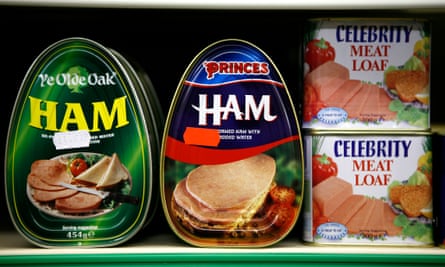Once it goes beyond its “best before” date, most packaged food ends up in landfill. That’s unless Dan Cluderay gets his hands on it. As founder of Approved Foods, the Sheffield-based entrepreneur buys “problem stock” from big food brands and sells it online. Despite having his business proposal rejected from Dragons’ Den, last year Cluderay shifted almost 10m edible food items, most of which were ostensibly out of date.
“We’ve only just sold out of our World Cup Kellogg’s cereals. Their “best before” date isn’t until May, but none of the supermarkets want to stock a product linked to an event that’s already passed”, says Cluderay, who started selling out-of-date goods at car-boot sales across Yorkshire.

Britons throw away 7.2m tonnes of food and drink every year, worth £12bn. The majority is perfectly safe to eat. So why do we chuck it? A recent report from government-backed waste body Wrap argues that often it’s because we’re confused over labelling.
Faced with a panoply of product life terms – “use by”, “display until”, “sell by”, “best before” and so on – shoppers are unsure when a product is or isn’t OK to eat. The result: if in doubt, bin it.
Among Wrap’s recommendations is for “display until” notices to be scrapped. It would also like to see statements such as “freeze on the day of purchase” altered to clarify that food can be safely frozen up to its “use by” date. In addition, it says manufacturers and retailers should standardise advice about the safety of products once they have been opened.
As it is, most large retailers are already phasing out “sell by” dates. Others, such as Sainsbury’s, have ditched “display until” too. The impacts of the EU Food Information Regulations, which came into force late last year, should see greater labelling consistency across industry as well.
Even so, Judith Batchelar, brand director at Sainsbury’s, says “you can never do enough” to educate consumers about product life information. “Historically, companies have moved away from [consumer education] because everyone has done things slightly differently.”
Cluderay voices a word of scepticism. To his mind, it can serve big retailers’ interests when customers empty their fridges prematurely. Batchelar, however, argues that supermarkets are motivated to ensure that food products are consumed at their optimum quality or customers will start complaining.
Where Cluderay does seem to have a strong case is on seasonal and time-sensitive promotions. The chocolate in an Easter egg lasts well over a year, but manufacturers and retailers typically shorten the “best before” date considerably. “They don’t want those Easter eggs around in six months time,” he says.
Another key recommendation in the Wrap report is to extend the time between a customer’s purchase and a product’s “best before” date. This may be as simple as removing the “overly cautious” safety or quality “buffers” that retailers put in place.
Technology innovations are helping here too. Innovations such as shrink-wrap packaging are helping prevent oxidisation and extending the product of fresh foods considerably.
Again, Cluderay is unsure. Adding a few days or even a few weeks to the “best before” date will not stop people throwing out food. They’ll just bin it a little later, he says. Cluderay insists that shoppers need to know that most products, if stored well, can still be eaten for weeks after the “best before” date passes.
“If consumer knew that the beef in a tin had been produced two years ago, what difference does it make if it goes one week after that date?”, he says. As if to prove the point, months-old beef is rapidly becoming all the rage in gastronomic circles.

Most people can judge if an apple from a tree is good to eat and Cluderay says we should adopt a similar common sense approach to packets of biscuits, rice and pasta. “These things with ‘best before’ dates are not going to kill you or make you ill.”
If you don’t trust your nose, then gelatine labels may soon be on hand to help out. Designed originally with blind consumers in mind, the solid gelatine in the Bump Mark device begins to liquefy when it deteriorates. Cleverly, the rate at which it deteriorates mirrors that of the packet’s contents. When the label tab feels squelchy, consumers know the food item is no longer edible.
While waste experts welcome efforts to extend product shelf life, some public health experts are less sure. One major concern centres on preservatives. If longer life is due to natural additives such as sugar and salt, or from chemical equivalents such as sodium benzoate, a rise in diet-related health conditions such as obesity and heart problems may follow.
A shift to longer-life food could, albeit unintentionally, reduce consumption of fresh food too. “Pushing these dates back,” says Tim Lang, professor of food policy at City University London “can encourage a world in which we say, ‘let’s just buy long-term pack food and everything pre-packaged”.
The food hub is funded by The Irish Food Board. All content is editorially independent except for pieces labelled ‘brought to you by’. Find out more here.
Join the community of sustainability professionals and experts. Become a GSB member to get more stories like this direct to your inbox

Comments (…)
Sign in or create your Guardian account to join the discussion